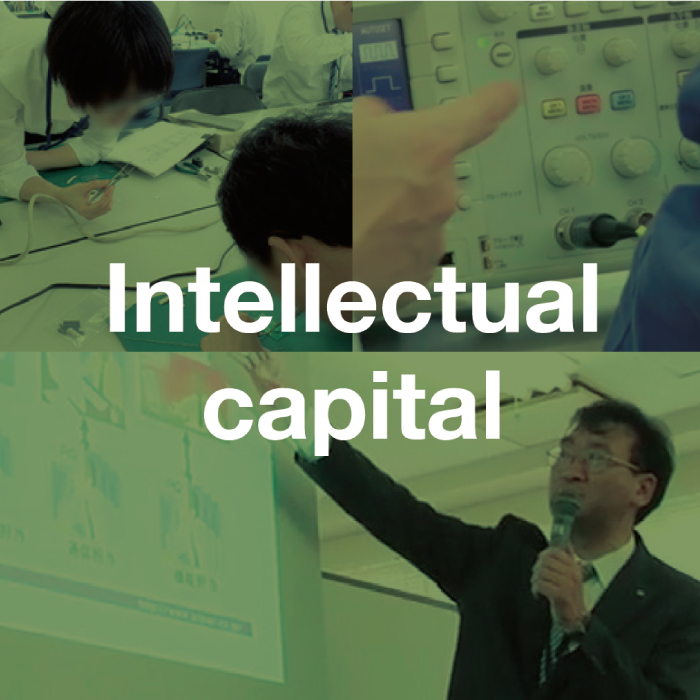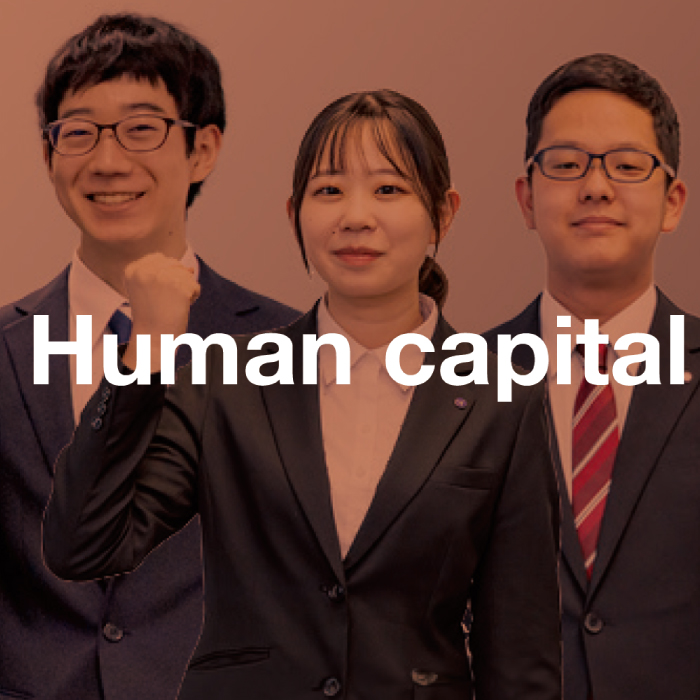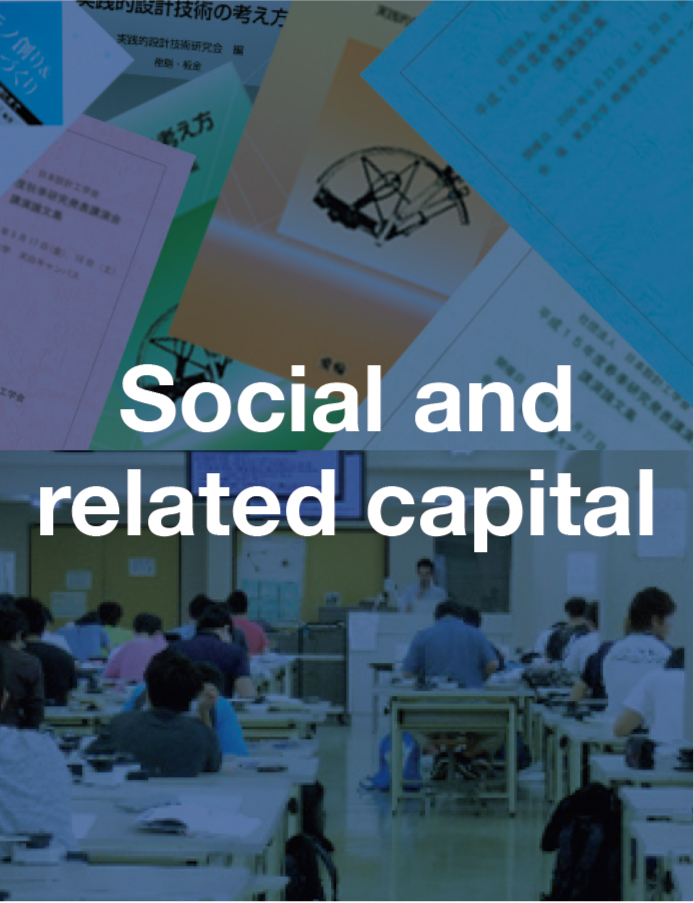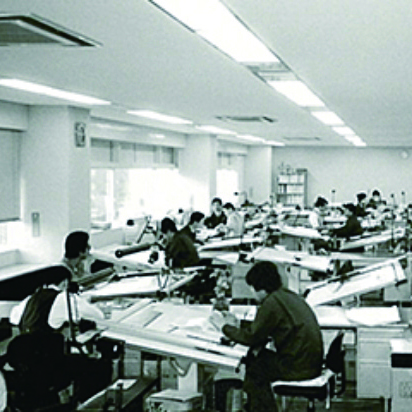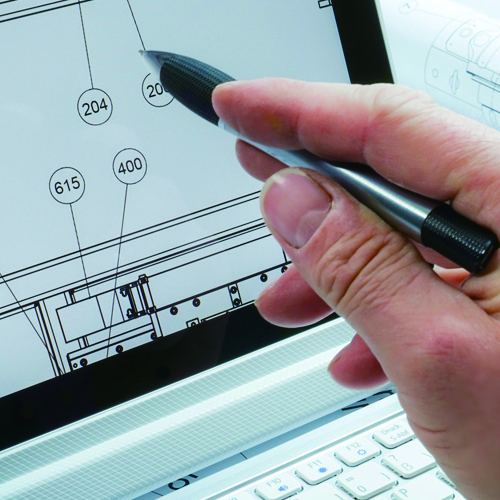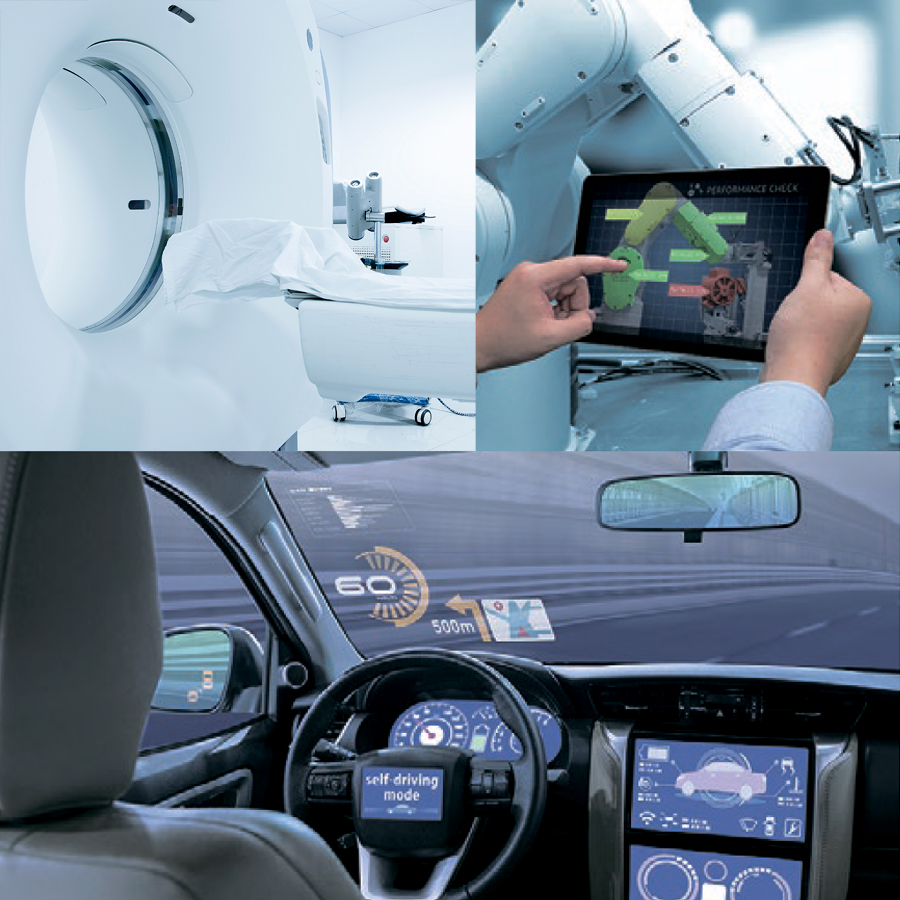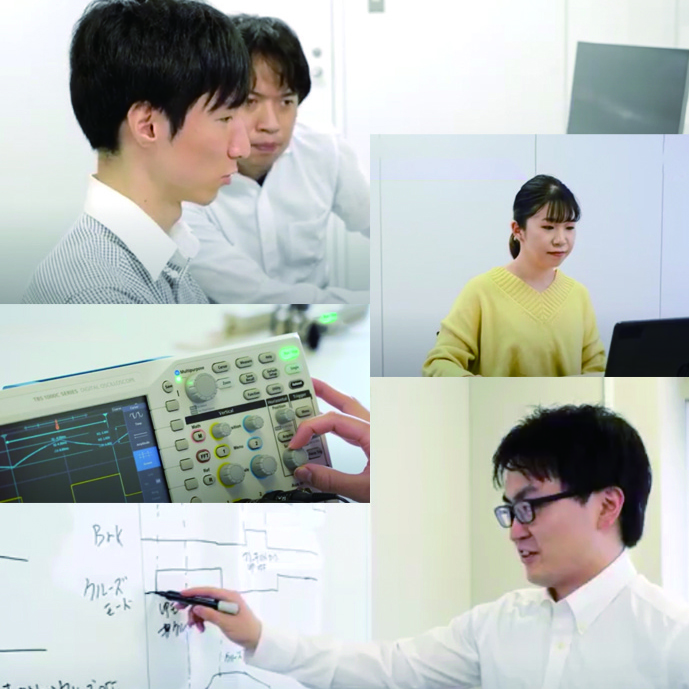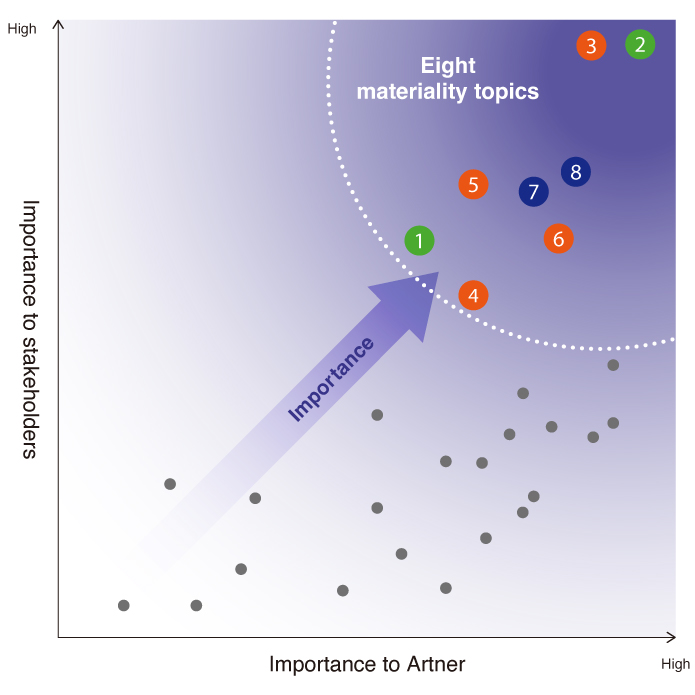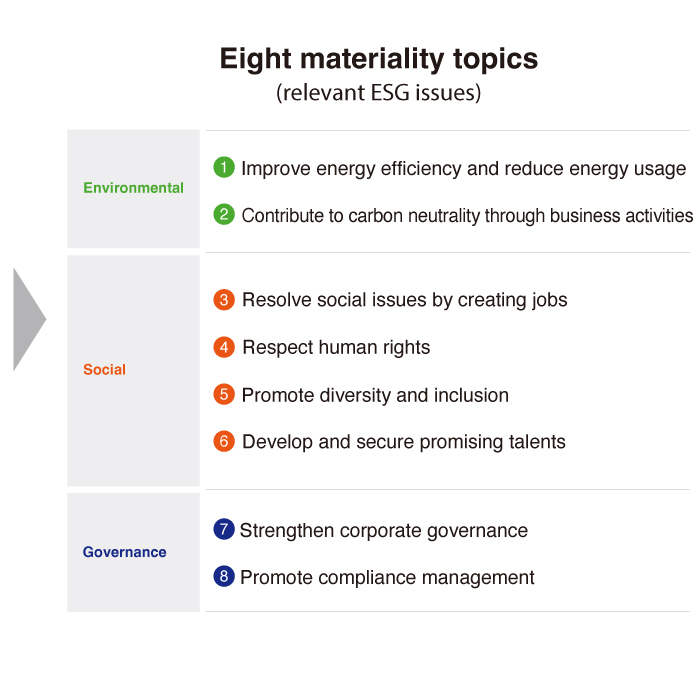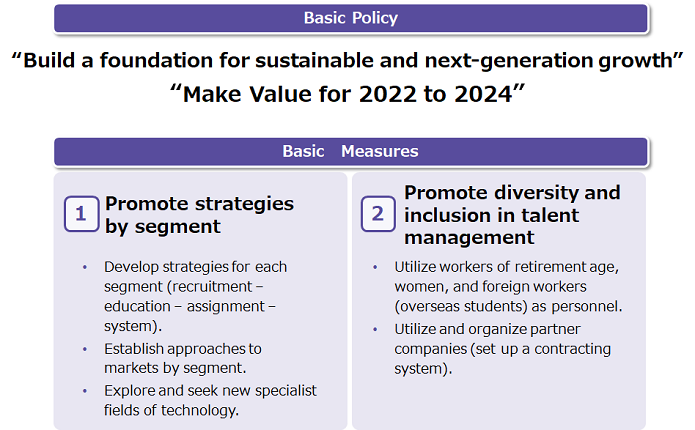Ever since a design firm was started by our founder, we have made continual changes in our mindset to cater to the evolving trends of the times, eventually developing our current business model as a technical service provider and creating value for engineers.
Value Creation Process[PDF 1.23MB/1 page]
External environment and social issues

Inputs
Sources of Value Creation
The Company has grown by staying attuned to societal changes and needs and contributing to solving social issues. In the course of this, we have accumulated various capital that is the sources of our current strengths. We will seek to strategically utilize and increase this capital and pursue further value creation.
Solid and strong financial base supporting
sustainable growth
Equity ratio
Net assets
Cash flows from
operating activities
69.9%
42.7billion yen
11.2billion yen
Practical education and training by
training managers with engineer backgrounds,
based on training curricula aligned with clients’ work
Percentage of training
managers with
engineer backgrounds
Average hours of annual
training per
employee (engineer)
Average cost of annual
training per
employee (engineer)
Regular employment of engineers with
STEM backgrounds who can be placed in
upstream/midstream work processes of manufacturers
Number of engineers
Percentage of
engineers with
STEM backgrounds
Engineers who can be
placed in upstream/
midstream work processes
of manufacturers
Long-term partnerships with clients, schools,
academic societies, and organizations
Transaction history
Schools from which we hired (graduate, undergraduate,
junior college, technical, and professional schools)
Roughly1,200 companies
Roughly 350 schools
Papers published
Part-time lecturing at universities by
our training managers
166
15 courses at 8 schools
Business Activities
Management philosophy/Purpose
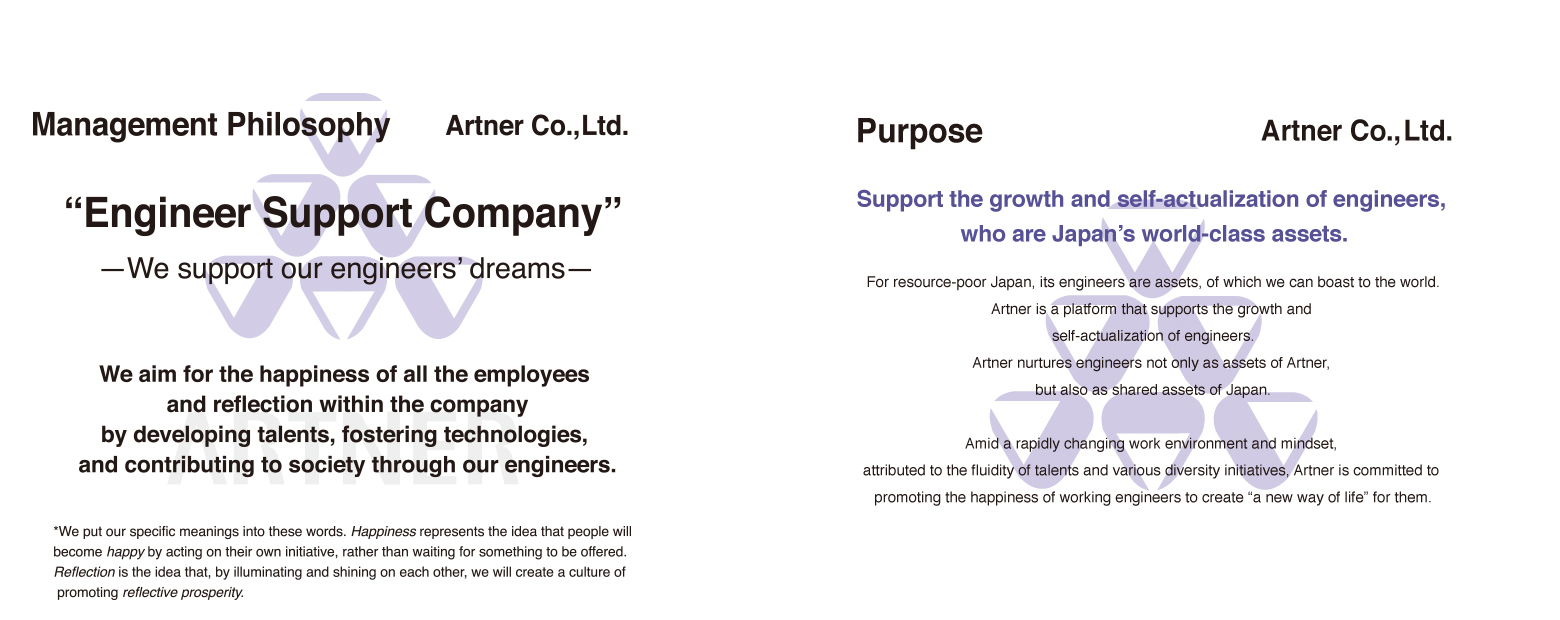
Our strengths
1.Trust from our clients built on our long history
Founded in 1962 as a design and development firm, the Company grew by
winning contract work for design and development from manufacturers in the
Keihanshin region, which drove Japan’s rapid economic growth. In our nearly
60-year history, we have succeeded in building trust with many client companies
and accumulating a proven track record as a group of engineers with roots
in design and development.
2.The business model we have developed
over many years
Even during the global financial crisis of 2008, not many engineers who were
placed in the upstream work processes of manufacturers (R&D) experienced
contract cancellations. As such, we decided to increase our engineers’
upstream assignment ratio. To help us recruit excellent students who may be
suited for upstream assignments, we have introduced internal programs based
on the needs of engineers (e.g., job change assistance program,
performance-based salary system, and limited area system).
3.Placement of engineers in technical fields with
high market needs
Our engineers’ business fields are wide-ranging. At major companies in the
automobile, home electronics, industrial equipment, medical device, and
information and communications sectors, engineers participate in and provide
a variety of technical services for cutting-edge projects, including eco cars
such as electric vehicles (EVs) and fuel cell vehicles (FCVs), driver assistance
technologies, racing cars, semiconductor lithography equipment, industrial
robots, and system and application development.
4.Job-based employment that allows career
development within the Company
We employ talent with STEM backgrounds as regular employees in technical jobs
and offer an environment where they can focus on honing their skills as engineers.
We classify the work processes of our clients into three categories: R&D;
product development; and production. Correspondingly, we have established three
groups for each area (High Value Group, Wide Value Group, and Product Value
Group). Engineers can move between these groups according to their preferences
and competence and develop their careers within the Company.
Our business and technology domains
【Services provided for work processes of manufacturers】
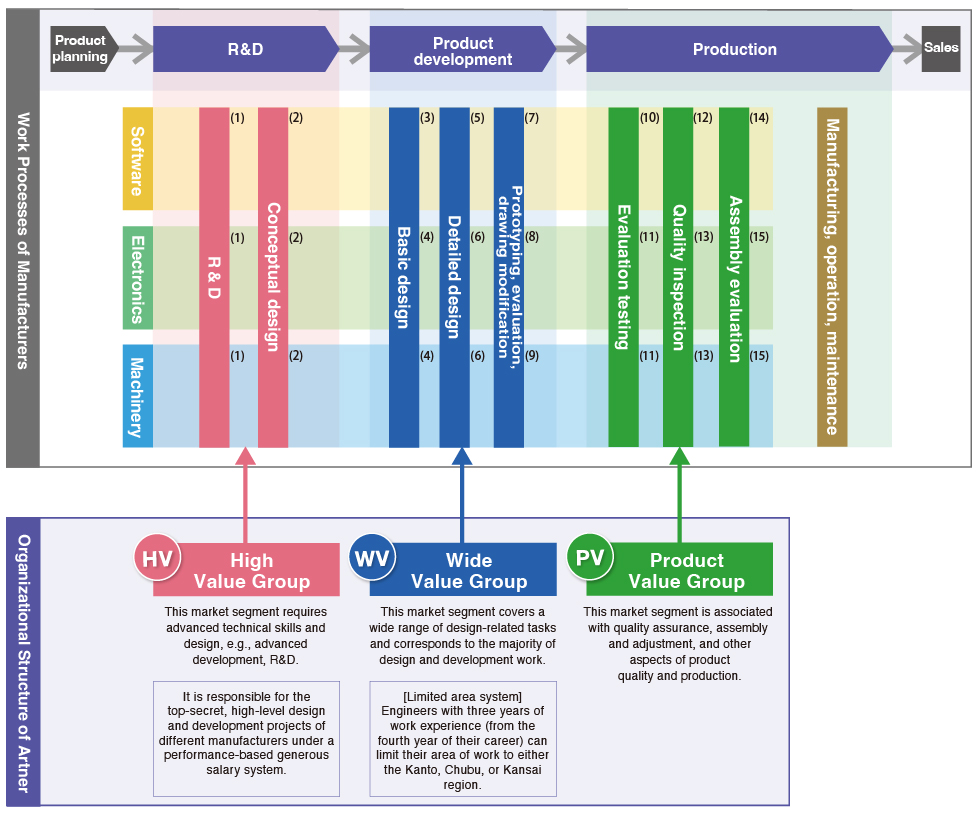
【Detailed processes】
(1) Advanced development of an upcoming product, including market research
(2) Development of core technologies, development of new functions, preparing specifications
(3) Requirements analysis, functional design
(4) Product design for mass production, functional testing
(5) Detailed design, coding, design and improvement of additional functions, modeling, simulation, code generation
(6) Production facility design and maintenance, production tool design, drafting, performance evaluation
(7) Unit/integration testing, log data analysis, failure analysis
(8) Revision of the schematic diagram/parts list, operational checks
(9) Drawing revisions, failure analysis, operational checks
(10) Reliability testing, test result and log data organization
(11) Product quality assurance testing, standards-based testing
(12) Quality control, operational maintenance
(13) Production plan development and coordination, parts procurement, quality assurance
(14) System testing, pre-shipment inspection, kitting
(15) Product manufacturing and assembly, quality checks
【Job change assistance program】

Eight materiality topics
Medium-Term Business Plan
Outcomes
Values provided
 * We put our specific meanings into these words. Happiness represents the idea that people will become happy by acting on their own initiative, rather than waiting for something to be offered. Reflection is the idea that, by illuminating and shining on each other, we will create a culture of promoting reflective prosperity.
* We put our specific meanings into these words. Happiness represents the idea that people will become happy by acting on their own initiative, rather than waiting for something to be offered. Reflection is the idea that, by illuminating and shining on each other, we will create a culture of promoting reflective prosperity.
Medium- to long-term goals



